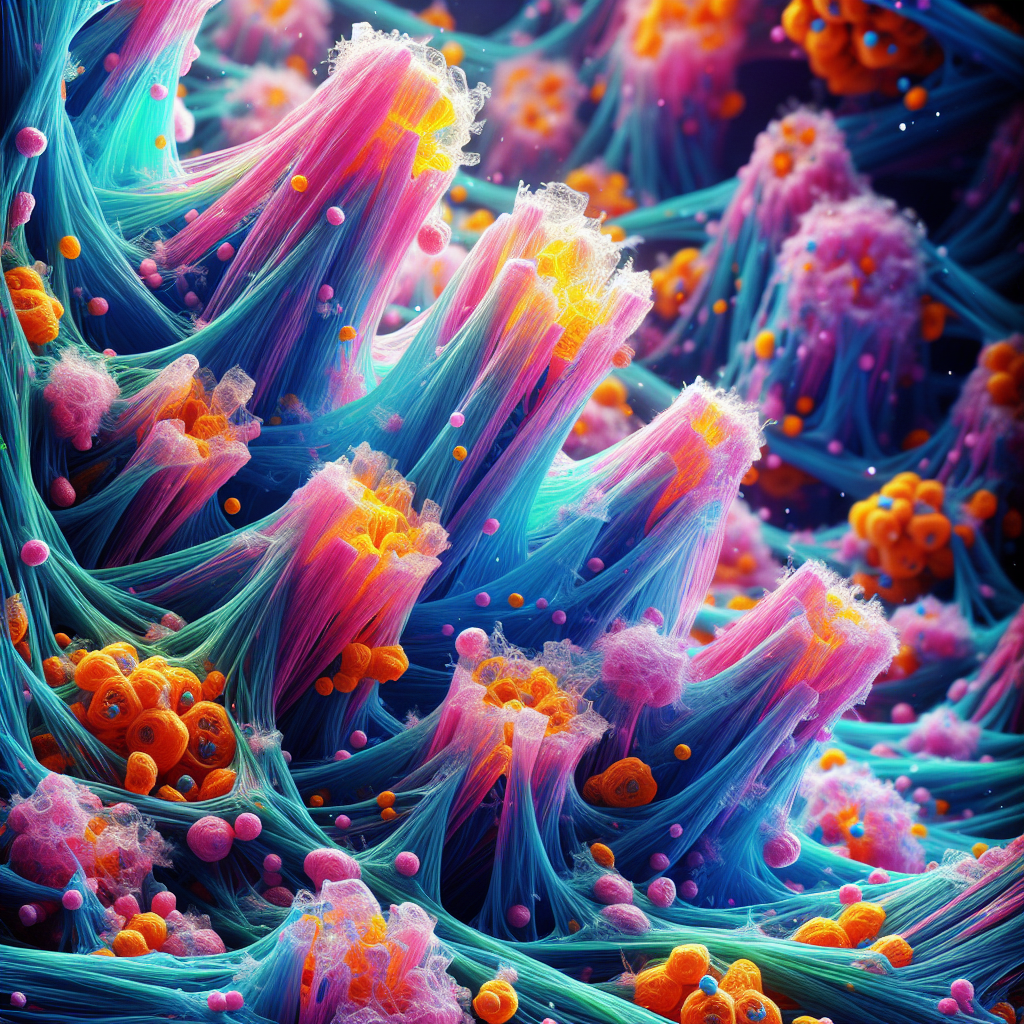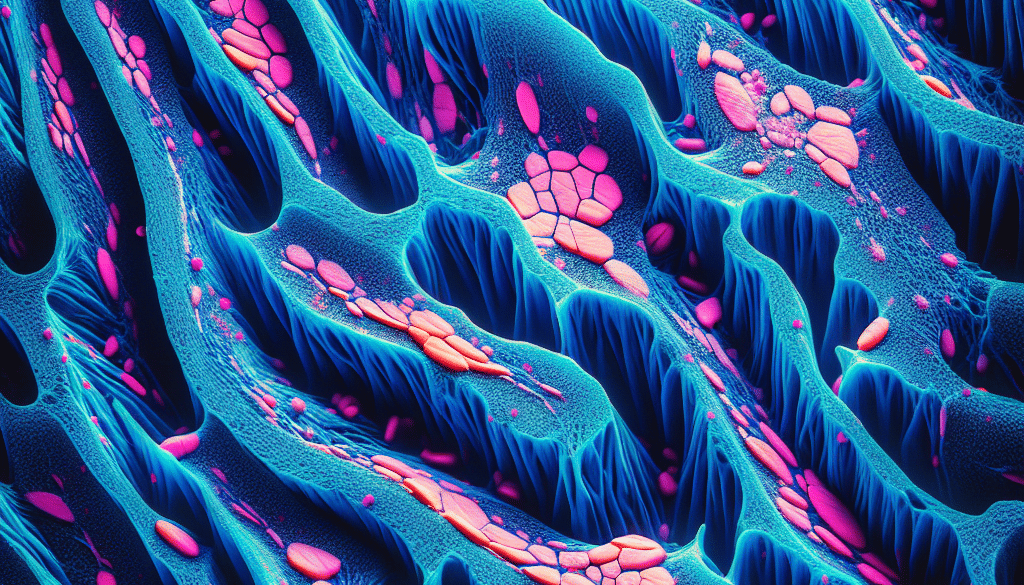Collagen Staining: Revealing the Underlying Beauty
-
Table of Contents
- Collagen Staining: Unveiling the Hidden Framework of Beauty
- The Significance of Collagen in Biological Tissues
- Techniques for Collagen Staining
- Masson’s Trichrome Stain
- Van Gieson’s Stain
- Picrosirius Red Stain
- Mallory’s Trichrome Stain
- Applications of Collagen Staining in Research and Medicine
- Case Studies and Statistics
- Conclusion: The Integral Role of Collagen Staining
- Discover ETChem’s Premium Protein Products
Collagen Staining: Unveiling the Hidden Framework of Beauty

Collagen, the most abundant protein in the animal kingdom, is the unsung hero of biological structure and beauty. It provides strength and structure to tissues, from the delicate skin that envelops us to the robust tendons that anchor our muscles. Collagen staining is a technique used in histology and medical research to reveal the presence and distribution of collagen fibers within tissue samples. This article delves into the world of collagen staining, exploring its significance, methodologies, and applications in various fields.
The Significance of Collagen in Biological Tissues
Collagen is a vital component of the extracellular matrix, playing a crucial role in tissue function and integrity. It is involved in:
- Providing tensile strength to connective tissues
- Facilitating wound healing and tissue repair
- Supporting the structure of skin, leading to its elasticity and firmness
- Ensuring the proper functioning of joints and tendons
Understanding the distribution and density of collagen is essential for researchers and clinicians alike, as it can provide insights into various pathological conditions, including fibrosis, scleroderma, and collagen vascular diseases.
Techniques for Collagen Staining
Several histological staining methods have been developed to visualize collagen fibers within tissue sections. Some of the most commonly used techniques include:
- Masson’s Trichrome Stain
- Van Gieson’s Stain
- Picrosirius Red Stain
- Mallory’s Trichrome Stain
Each staining method has its own set of advantages and is selected based on the specific requirements of the study or diagnostic procedure.
Masson’s Trichrome Stain
Masson’s Trichrome is a popular method for differentiating between collagen and muscle fibers. It stains collagen blue or green, while muscle fibers, cytoplasm, and keratin are stained red. This contrast is particularly useful in studies of muscle pathology and fibrotic changes.
Van Gieson’s Stain
Van Gieson’s stain is a simple technique that uses picric acid and acid fuchsin to differentiate collagen from other tissue elements. Collagen fibers are stained red, while other tissues take on a yellow hue. This method is often employed in cardiovascular research to assess the connective tissue in blood vessels.
Picrosirius Red Stain
Picrosirius Red staining is a powerful technique for visualizing collagen fibers under polarized light microscopy. It enhances the birefringence of collagen, allowing for the assessment of fiber orientation and thickness. This method is widely used in the study of fibrotic diseases and the aging of connective tissues.
Mallory’s Trichrome Stain
Mallory’s Trichrome staining is another trichrome technique that provides a clear distinction between collagen and other tissue components. Collagen is stained blue, while muscle and red blood cells are stained red. This method is particularly useful for examining the liver and kidney tissues.
Applications of Collagen Staining in Research and Medicine
Collagen staining has a wide range of applications in both research and clinical settings:
- Assessing the extent of fibrosis in liver diseases such as cirrhosis
- Evaluating the remodeling of the extracellular matrix in tumor microenvironments
- Studying the progression of cardiovascular diseases by examining the connective tissue in heart valves and blood vessels
- Investigating skin diseases and aging by analyzing the changes in dermal collagen
- Understanding the mechanisms of joint and bone disorders through the visualization of collagen in cartilage and bone
These applications highlight the importance of collagen staining in advancing our understanding of various diseases and in developing targeted treatments.
Case Studies and Statistics
Several case studies have demonstrated the utility of collagen staining in medical research. For instance, a study on idiopathic pulmonary fibrosis utilized Picrosirius Red staining to quantify the extent of fibrosis and correlate it with disease progression. Another study employed Masson’s Trichrome staining to evaluate the efficacy of antifibrotic drugs in reducing collagen deposition in liver fibrosis models.
Statistics from these studies often reveal a significant correlation between collagen density and disease severity, underscoring the value of collagen staining in diagnostic and prognostic assessments.
Conclusion: The Integral Role of Collagen Staining
Collagen staining is more than just a tool for revealing the hidden framework of beauty within biological tissues; it is a critical technique for understanding and diagnosing a myriad of diseases. By allowing researchers and clinicians to visualize and quantify collagen, these staining methods contribute to the advancement of medical science and the development of new therapies.
The key takeaways from this article are:
- Collagen is essential for tissue structure and function.
- Various staining techniques are available to visualize collagen fibers.
- Collagen staining has broad applications in research and clinical diagnostics.
- Case studies and statistics support the relevance of collagen staining in medical science.
Discover ETChem’s Premium Protein Products
If you’re in the market for high-quality collagen products, ETChem is your go-to source. With a wide range of collagen types, including marine, fish, bovine, and chicken collagen, ETChem caters to diverse industry needs. Their products are characterized by neutral taste and instant solubility, making them ideal for various applications in nutraceuticals, pharmaceuticals, cosmeceuticals, and more.
ETChem’s specialization in exporting and delivering tailor-made collagen powder and finished collagen nutritional supplements ensures that you receive the best solutions for your protein requirements. Contact ETChem for more information or to sample their products.
About ETChem:
ETChem, a reputable Chinese Collagen factory manufacturer and supplier, is renowned for producing, stocking, exporting, and delivering the highest quality collagens. They include marine collagen, fish collagen, bovine collagen, chicken collagen, type I collagen, type II collagen and type III collagen etc. Their offerings, characterized by a neutral taste, instant solubility attributes, cater to a diverse range of industries. They serve nutraceutical, pharmaceutical, cosmeceutical, veterinary, as well as food and beverage finished product distributors, traders, and manufacturers across Europe, USA, Canada, Australia, Thailand, Japan, Korea, Brazil, and Chile, among others.
ETChem specialization includes exporting and delivering tailor-made collagen powder and finished collagen nutritional supplements. Their extensive product range covers sectors like Food and Beverage, Sports Nutrition, Weight Management, Dietary Supplements, Health and Wellness Products, ensuring comprehensive solutions to meet all your protein needs.
As a trusted company by leading global food and beverage brands and Fortune 500 companies, ETChem reinforces China’s reputation in the global arena. For more information or to sample their products, please contact them and email karen(at)et-chem.com today.

